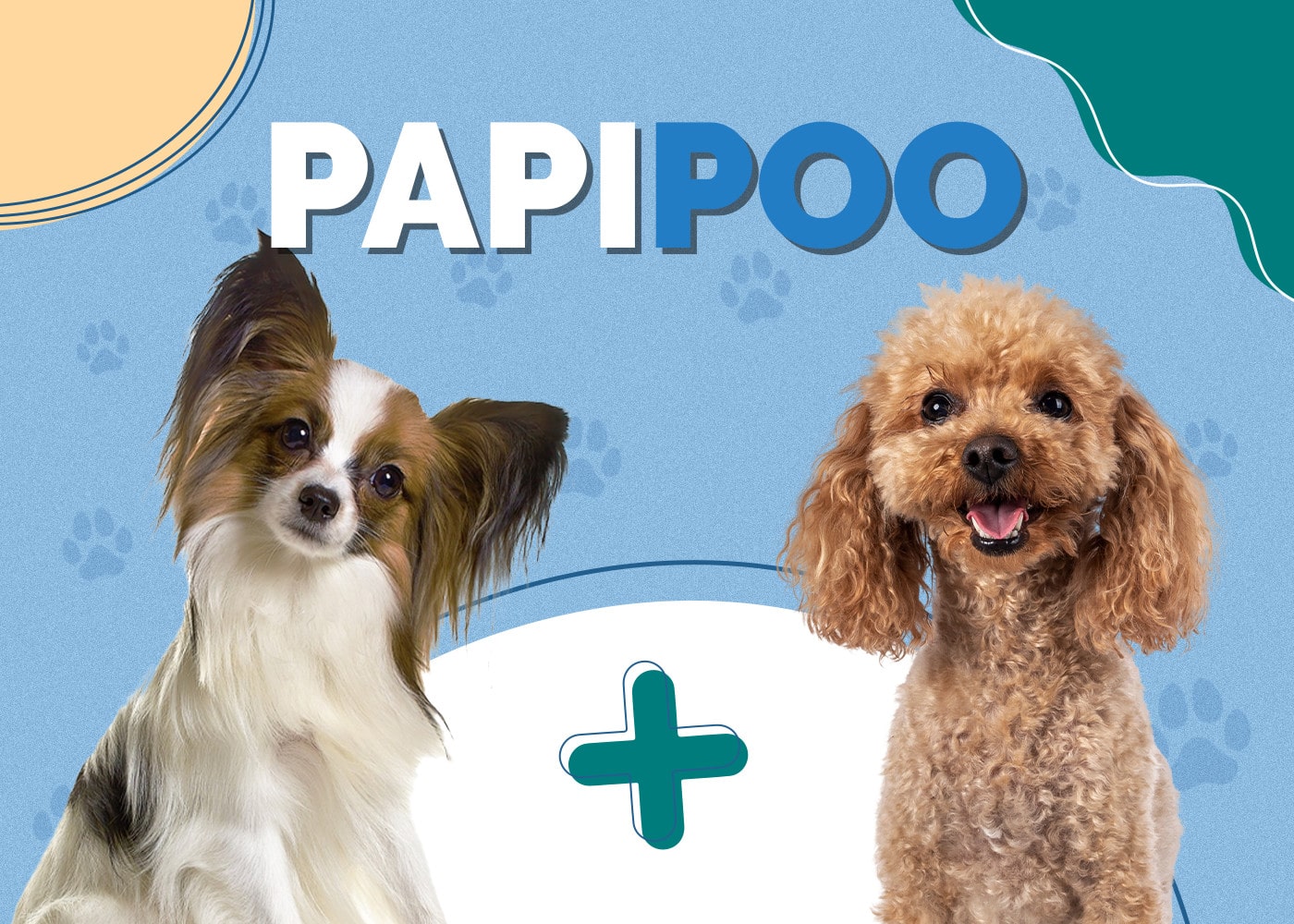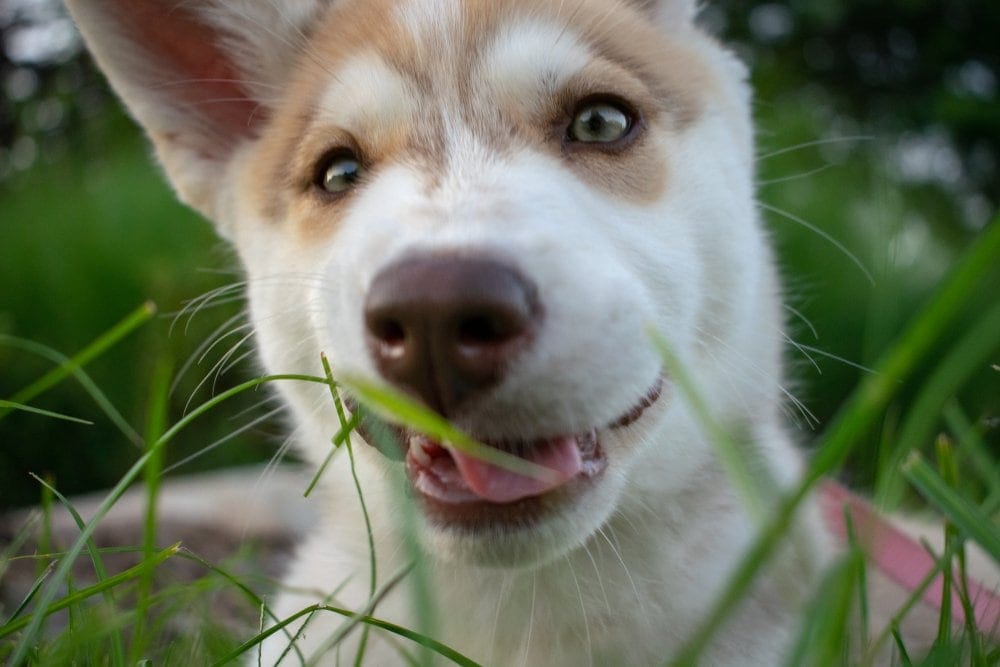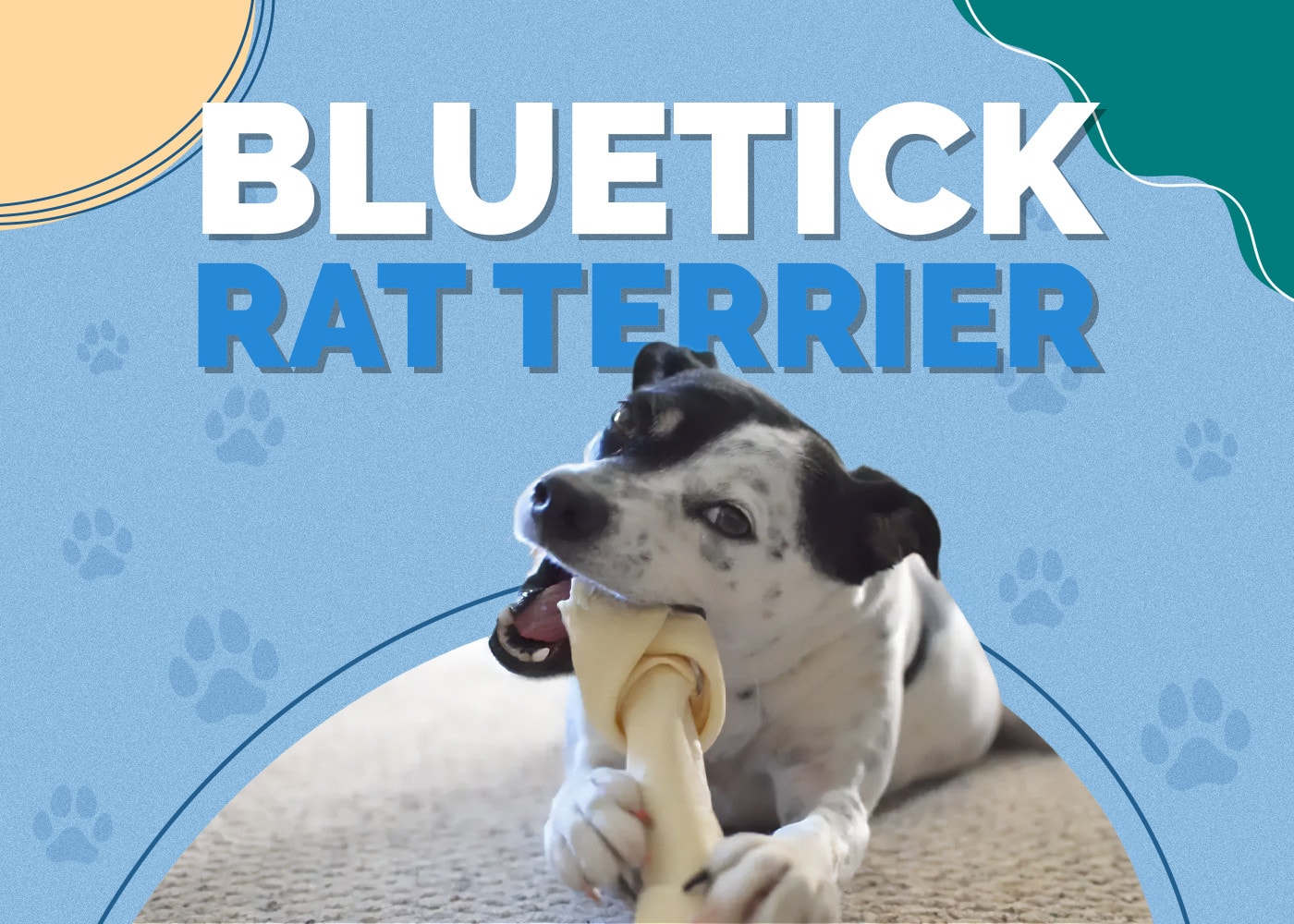Bulldog Dachshund Mix (Bulldach) Dog Breed Info, Pictures & Traits

Updated on
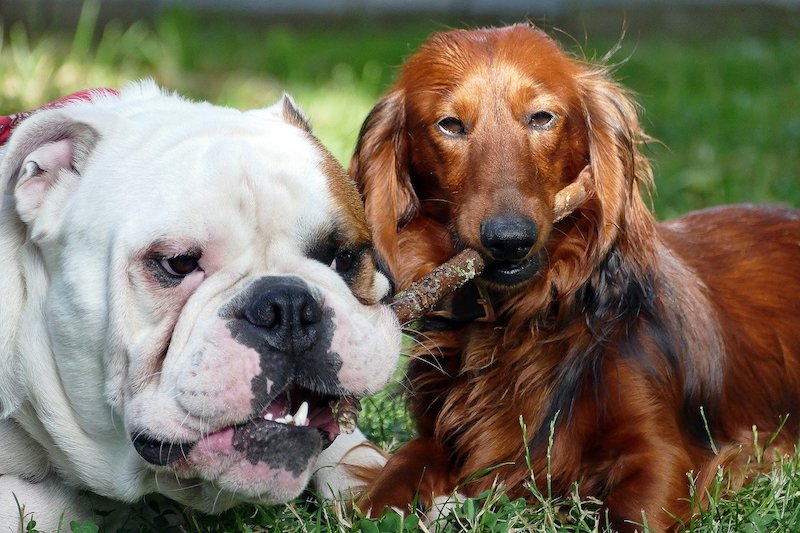
| Height: | 11 – 12 inches |
| Weight: | 25 – 40 pounds |
| Lifespan: | 10 – 14 years |
| Colors: | Brindle, cream, lilac, black, fawn, brown |
| Suitable for: | Families, houses or apartments, home most of the time |
| Temperament: | Friendly, courageous, social, playful, stubborn |
A dash of English Bulldog mixed with a sprinkling of Dachshund will give us the Bulldach (also known as the English Bulldog Dachshund). The English Bulldog is a calm, loyal, and friendly dog, and the Dachshund is smart, independent, and spunky. They are both quite unique in appearance and temperament. The Bulldach is a mix of her parents’ personalities and looks, making her an unusual and exceptional crossbreed.
The Bulldach will look quite different in appearance, depending on which parent she resembles the most. She might have the low, long body and long muzzle of her Dachshund parent or the stocky, muscular body with the pushed-in face of the Bulldog or a variation between the two. She will have the short, smooth coat of either breed unless the Dachshund is a wirehaired or longhaired variation. The Bulldach may be cream, fawn, brown, black, brindle, or lilac (also known as isabella) in color.
 Bulldach Puppies
Bulldach Puppies
The Bulldach is a relatively low-energy dog with an expected lifespan for a dog of her size and is generally healthy. They are a challenge to train as they have a streak of stubbornness, but are amiable dogs, although they need to be watched around other dogs.
3 Little-Known Facts About the Bulldach
1. A litter of Bulldach puppies can all look very different from each other.
Because their parents have strongly defined appearances that are very different from each other, the offspring between the Bulldog and the Dachshund can look quite varied depending on which parent each one takes after the most.
2. The Bulldach is not for first time dog owners.
They can be challenging to train thanks to a strong, stubborn streak and can act defensively around other dogs.
3. The Bulldach is perfect for people who aren’t terribly active.
The Bulldog side of the Bulldach makes for a rather sedate dog who will probably prefer to stay at home.
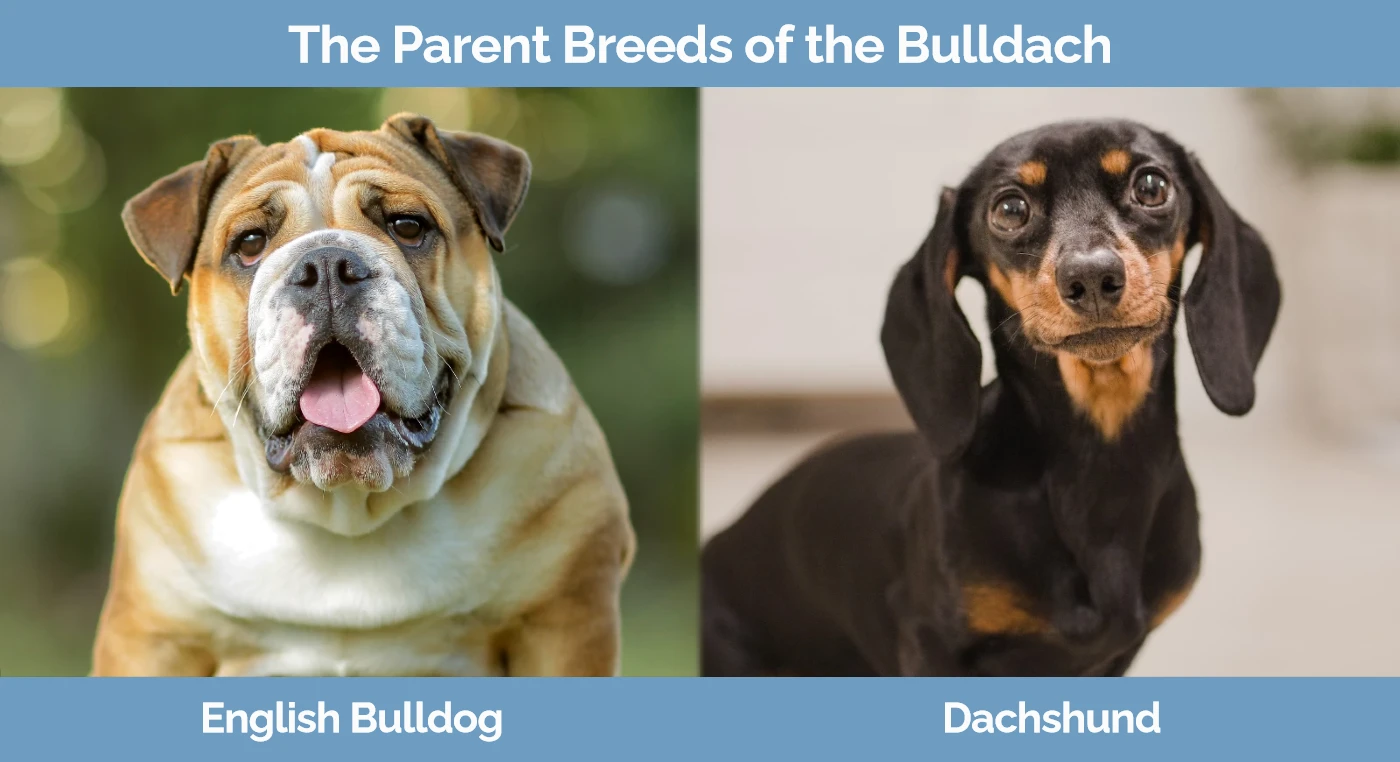
Temperament & Intelligence of the Bulldach 🧠
The Bulldach is not much of a barker and will be happy in either a house or an apartment. They are prone to separation anxiety if you spend a lot of time away, so be prepared to be at home more often than not.
Bulldogs are not known for their intelligence, whereas the Dachshund is a smart dog, so your Bulldach might be intelligent, or she might not be the brightest dog. Her temperament also depends on which parent she takes after the most. But, the Bulldach should be a bit more easygoing than the typical Dachshund and have more energy than the Bulldog.
Are Bulldachs Good for Families? 🏡
The Bulldach makes an excellent family pet! They get along very well with all children but remember to always supervise, particularly when the kids are younger and smaller. Be sure to teach your children to respect dogs, so both the kids and the dogs are safe.
Do Bulldachs Get Along with Other Pets? 🐶 😽
If the Bulldach is socialized well as a puppy, she will get along well with other pets. Keep in mind that her Dachshund heritage might see the Bulldach chase smaller animals, and there could be issues with aggression towards other dogs, particularly the male Bulldach.
Things to Know When Owning a Bulldach:
Food & Diet Requirements 🦴
The Bulldach tends to be a small dog, so you need to consider her size, age, and activity level when choosing a good quality dry dog food (such as this one). Read the back or the side of the dog food bag as there are guidelines that can help you to determine the proper amount to feed your dog. Bulldogs tend not to be terribly active, so keep in mind that your Bulldach might be susceptible to gaining weight. Therefore, be careful with how much you feed her and go easy on the treats you give her every day. Consult your veterinarian if you ever have concerns regarding her health or weight.
Bulldach Exercise 🐕
Your Bulldach won’t be the most active dog out there, but to prevent obesity, you should ensure your dog receives a minimum of 30 minutes of exercise every day. If your Bulldach takes on the long body of her Dachshund parent, you need to be aware that there are certain exercises that could damage her back, such as jumping onto hard surfaces. If she inherits her Bulldog parent’s short muzzle, she might also have difficulty breathing, so do avoid strenuous exercise, particularly in hot weather.
Bulldach Training 🦮
Training your Bulldach will be a challenge. The Bulldog is sweet but not terribly smart, and the Dachshund can be independent and stubborn, so when you combine these traits into one dog, you might just have yourself a dog that is difficult to train. Very patient and consistent training with positive reinforcements should work, particularly when you start with them as young as possible.
Bulldachs Grooming ✂️
Grooming the Bulldach is easy as long as she has a short coat. Brushing about once a week will suffice unless she inherits her coat from a long-haired or wire-haired Dachshund, which will need brushing several times a week. Only give your dog a bath if it’s absolutely necessary, which shouldn’t be more than once a month using a good dog shampoo. If she has facial wrinkles like her Bulldog parent, make sure you spend extra time cleaning her wrinkles and skin folds to avoid infections.
You should brush your Bulldach’s teeth around 2 or 3 times a week, trim her nails every 3 to 4 weeks, and clean her ears about once a month (or as often as you think is necessary).
Health and Conditions ❤️
The Bulldach won’t be nearly as likely to inherit some of the health problems of her purebred parents, but it’s important to become familiar with some of the health conditions they might experience.
- Dry eye syndrome
- Breathing problems
- Abnormal eyelid
- Cherry eye
- Eyelash disorders
- Lower eyelid droop
- Mange
- Internalized tail
- Deafness
- Dry eye syndrome
The vet will check your Bulldach’s eyes, ears, and skin and run hearing tests to help determine if your dog may have inherited any of these conditions.
- Hip dysplasia
- Shoulder luxation
- Elbow dysplasia
- Kneecap dislocation
- Ventricular septal defect
- Urethral prolapse
- Vaginal hyperplasia
- Diabetes
- Gastric torsion
- Seizures
- Kneecap dislocation
- Cushing’s disease
- Slipped disc
Your veterinarian will check your dog’s hips, knees, shoulders, and spine and will run urinalysis and blood tests in addition to a complete physical exam.
Male vs. Female
The male Bulldach might be heavier than the female. The Bulldach is generally 11 to 12 inches in height, and the male weighs 30 to 40 pounds, whereas the female could weigh 25 to 35 pounds. Given the vast difference in body size and type between the Bulldog and the Dachshund, a female could very well be larger and heavier than a male if she takes after her Bulldog parent and the male the Dachshund.
The next primary difference lies in whether you want to spay or neuter your dog. Spaying a female is a more complicated surgery than neutering the male, and therefore, expect to pay more and a longer recovery time for your female. Some of the advantages of these surgeries are lessening aggressive behavior, stopping your dog from wandering away, and preventing health problems in the future. Oh, and it also prevents pregnancies.
Lastly, many believe that there are behavioral differences between female and male dogs. For example, females are thought to be a little easier to train and are more affectionate than males, but there are also debates about this. The true determination of most dog’s personalities and temperaments will generally come from how they were raised and socialized as puppies and how they have been treated throughout their adult dog lives.
Final Thoughts: Bulldachs
Finding a Bulldach puppy will prove a difficult challenge, but you could start by speaking to Bulldog and Dachshund breeders, who might be able to point you in the right direction. You can also consider attending dog shows and talking to national and local dog clubs. Posting your interest in a Bulldach on social media will probably be one of the best methods for getting your message out and, hopefully, a new puppy into your home.
If you love the English Bulldog and the Dachshund, perhaps adding a Bulldach to your family will give you the best of both worlds.
Related Reads:
Featured Image Credit: Pixabay
 Bulldach Puppies
Bulldach Puppies



